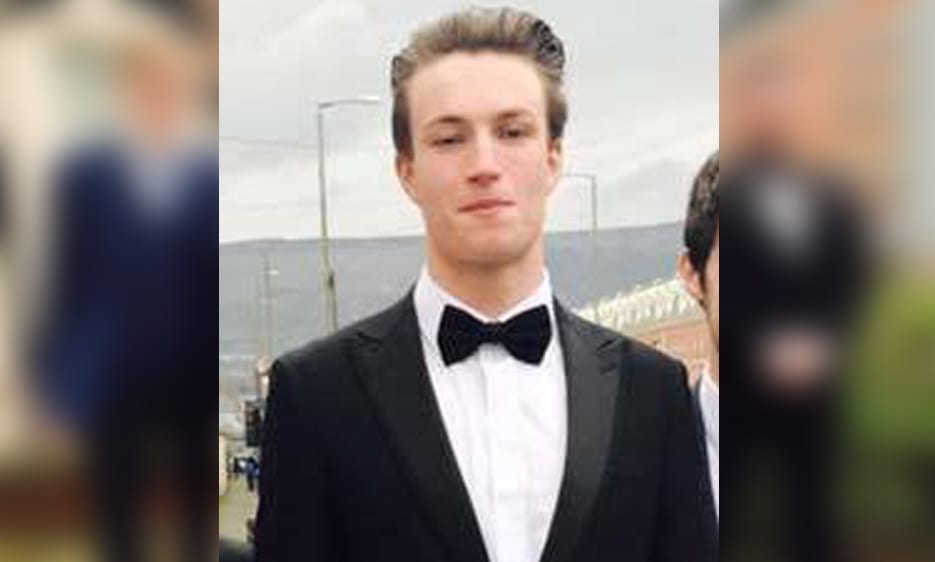
Three lifeguards on trial for breaching their duty of care “waited too long” to initiate a rescue and missed the signs that an “accomplished swimmer” had lost consciousness under water, a top water safety expert told a jury today.
Dr. Daniel Jacklin told the jury he had found multiple faults and failings which lead to the tragic death of Christopher Rogers, including a prolonged handover between lifeguards, asking a member of the public to check on the 20-year-old athlete, and waiting too long to initiate a rescue attempt.
While the Newry Crown Court jury have heard how Mr Rogers seemingly gave a “thumbs up” sign to another swimmer in the Orchard Leisure Centre pool, a message which was then conveyed to the three defendants.
The “thumbs up” sign, he told the court, was in keeping with Mr Rogers experiencing “decerebrate posturing” where his hands and limbs had “curled up” and that had been misinterpreted.
Citing the lifeguard mantra of “if in doubt get them out,” Dr. Jacklin told prosecuting KC Liam McCollum “it should not be left to members of the public to check people in the pool”.
“If it has got to that point you are now passed the point where you should have initiated a rescue and it is at that point that you should be entering the water having recognised that you have waited too long before arriving at that conclusion,” said Dr. Jacklin.
On trial each facing a single count that being employee, they were in breach their duty to others on April 7, 2017 in that they “failed to take reasonable care for the health and safety of other persons who may be affected by your acts or omissions at work” are:
Cathal Forrest-McVeigh (35), from Dunamony Road in Dungannon;
William Holden (26), from Unshinagh Lane in Portadown; and
James Monaghan (26), from Folly Lane in Armagh.
Since the trial began last week, the jury of four men and eight women have heard how Mr Rogers, an accomplished and prolific swimmer, had swam two and a half lengths of the pool when he broke the surface and sank to the bottom where he remained outstretched and on his back for five minutes and 14 seconds.
The jury have also heard that during that time, the lifeguards were aware of Mr Rogers and had been observing him, that McVeigh and Monaghan were engaged in conversation for two minutes and twenty seconds and that before they attempted a rescue, McVeigh had banged on the steps with a pole and had asked another swimmer to check on him, that swimmer believing that he got a “thumbs up” sign from the 20-year-old.
Outlining a number of faults in how the three defendants approached the situation that night, he told the jury the handover from Monaghan to McVeigh should only have taken around 20 seconds, not more than the two minutes it did and that as a result, they were not giving full concentration to the people in the pool “and that makes it more likely that signs would not be seen”.
Holden had been in the high chair, the jury have heard, and he remained there for most of the duration of the incident but he did come out of the chair and stood beside it for a time and Dr. Jacklin said that in his view, “he should not have done that”.
Instead, Holden ought to have remained in the chair where he would have had a better view of what was happening in the pool.
Dr. Jacklin said it also should not have been left to the other swimmer to check on Mr Rogers and that the signs of Mr Rogers’ distress ought to have been seen earlier and a rescue initiated.
Under cross examination from Gavan Duffy KC, senior defence counsel for McVeigh, Dr. Jacklin conceded however that at the time in 2017 there was “absolutely no mention” of hypoxic black out, shallow water black out or anything about decerebrate posturing in the RLSS training manuals.
“The importance of all that is that if they’re to stand and watch, they need to know what signs to look out for,” Mr Duffy suggested and the expert told him “I think everybody would agree that they need to know the signs otherwise they are not going to be able to detect” that they need to act.
He also conceded that he had found faults and failings in how the Orchard Leisure Centre kept records relating to lifeguard training and induction and had “failed to properly risk assess and subsequently train lifeguards to recognise hypoxic blackout”.
In conceding the cross examination, Mr Duffy suggested to Dr. Jacklin that “in summary… there was no proper risk assessment in relation to the type of activity he was undertaking…there are criticisms of the training provided to lifeguards…it’s very clear that the lifeguards identified Mr Rogers and had him under observation for the majority of the time but clearly, they failed to have sufficient understanding of what was happening to recognise that he was in danger”.
To each of the series of suggestions, Dr. Jacklin agreed.
The trial continues.
‘Athletic’ young man who died in Armagh swimming pool was qualified lifeguard, trial hears
Three Armagh lifeguards accused of ‘failing to do their jobs properly’ following death of swimmer






